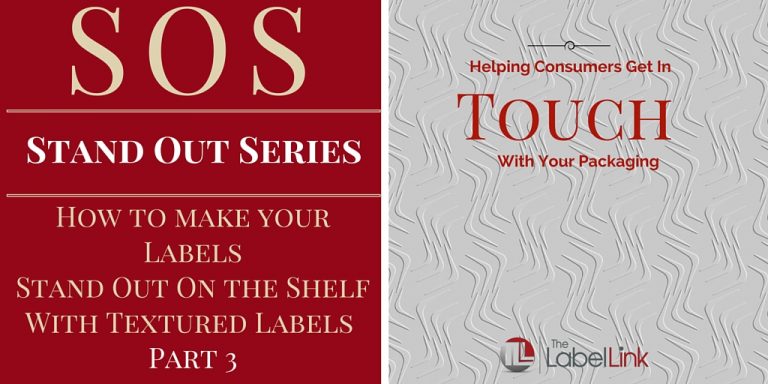
Consider this: You’re walking down the aisle of the drugstore when a bottle of lotion catches your eye. There are dozens of brands on the shelf, but one stands out more than the others. You pick up the bottle, brush your thumb over the label and are instantly impressed with what you feel – it’s textured.
Textured labels are a hot new trend and with good reason. Your customers can literally see and feel the difference between your product and the others on the shelf. Texture draws your customers in. They want to pick up your bottle and touch it. Once that happens, they’re closer to putting it in their basket and buying it.
There are four ways to add texture to your bottles.
1. Change Up the Paper Stock
Using specialty printing materials, such as linen or estate paper stocks. These are often found on wine bottles or high-end soaps.
Specialty stocks are often used to create a specific aesthetic. For example, you can use linen style stock on all-natural products. Or, you can use metallic silver stock to sell kids products. The possibilities are endless.
The first thing your customers will notice about specialty stock is the aesthetic appeal. Then, when they pick up your product, they’ll feel the difference. It’s the perfect compliment to make your product get more attention on a crowded shelf.
2. Raise the print
Want your product’s name to jump off the label… literally? Raise the print!
In the printing world, this is often referred to as high-build screen texture or dimensional printing, and embossing or debossing.
Dimensional Printing
Dimensional printing gives specific text a raised or 3D effect. It works by loading a special type of clear ink. Then, it creates a raised layer on top of the page after curing. There’s no limit to what you can raise. Graphics, text, full-color images, and any other design can all be brought to life through dimensional printing.
Embossing or Debossing
Looking for a different way to raise or lower the print? Try embossing or debossing. This uses the same concept while making small imprints into or out of the label. When you run your finger over the label, you can feel the raised print.
3. Incorporate Patterns
Patterns jazz up your labels and give them an extra dimensional look without any texture. Add in dimensional printing or embossing and you have a label people can’t ignore.
Here are four ways you can use patterns to make your labels pop.
- Use patterned ink designs, such as checkerboards or chevron.
- Use high-build screen coating to make 3D patterns on your labels.
- Use holograms to make your patterns come to life.
- Use embossing or debossing to add a unique textured look & feel to your patterns.
4. Use New Coatings
You’ve heard of gloss or matte photographs, but what about gloss/matte combo product labels?
Gloss/Matte Combo Coatings
Combining both gloss and matte coatings on a surface gives your product labels a 3D effect. The gloss text or image instantly stands out from the matte surface background. Indeed a dramatic look.
It’s a popular trend in luxury items.
Companies produce a “soft touch bottle” coated in matting to make it feel more luxurious and desirable. So why cover it up with a label and ruin the effect? No longer do you have to worry about that. Now, there are special matte coatings that make the label feel extra soft. Just like your bottle!
Question: What type of texture would you most like to try? Share with us in the comments.
